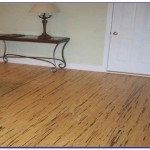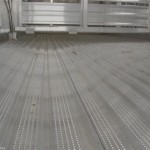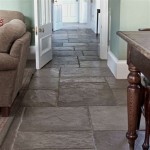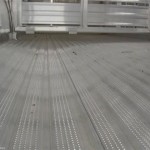Flooring Business Card Templates: A Comprehensive Guide
In the competitive landscape of the flooring industry, a well-designed business card serves as a crucial marketing tool, facilitating networking and leaving a lasting impression on potential clients. Beyond merely displaying contact information, an effective flooring business card communicates professionalism, expertise, and the overall brand identity of the company. Flooring business card templates provide a starting point for creating such cards, offering customizable designs and layouts to suit various business needs. This article delves into the considerations involved in selecting and utilizing flooring business card templates, highlighting key design elements, customization options, and printing considerations.
The primary function of a business card is to provide essential contact information, including the business name, individual's name and title, phone number, email address, and physical address (if applicable). However, a flooring business card can also incorporate visual elements such as the company logo, brand colors, and imagery related to flooring services. These elements contribute to creating a memorable and impactful card that effectively represents the business. The effectiveness of a business card hinges on its design, which should be both visually appealing and functionally informative. Templates offer a structured framework for achieving this balance.
Key Considerations When Choosing Flooring Business Card Templates
Selecting the appropriate flooring business card template involves considering several factors to ensure it aligns with the business's brand and marketing objectives. These considerations encompass design aesthetics, industry relevance, and customization capabilities.
Design Aesthetics: The visual appearance of the business card is paramount. A well-designed card should be aesthetically pleasing and reflect the company's brand identity. Templates offer a variety of design styles, ranging from minimalist and modern to more traditional and elaborate. When selecting a template, consider the overall aesthetic the business wishes to project. A modern flooring company specializing in contemporary designs might opt for a sleek and minimalist template, while a business focused on classic hardwood flooring might prefer a more traditional design. The color scheme should align with the company's brand colors, and the typography should be legible and professional. A cluttered or poorly designed card can detract from the business's image and make it difficult for potential clients to discern essential information.
Industry Relevance: A relevant template should accurately represent the flooring industry. This can be achieved through the use of imagery that depicts flooring materials, installation tools, or finished flooring projects. Some templates may incorporate subtle patterns or textures that evoke the feel of different flooring types. The language used on the card should also be industry-appropriate, using terms and phrases that resonate with potential clients in the flooring market. Avoid generic templates that do not specifically cater to the flooring industry, as these may not effectively communicate the business's area of expertise.
Customization Capabilities: The ability to customize a template is crucial for tailoring it to the specific needs of the business. Templates should allow for easy modification of text, colors, and images. The ability to upload a company logo and adjust its size and placement is also essential. Some templates may offer more advanced customization options, such as the ability to add custom shapes, icons, or QR codes. The customization process should be user-friendly, even for individuals with limited design experience. Furthermore, consider the scalability of the template. Ensure that the template can accommodate all the necessary information without appearing cramped or overwhelming.
Essential Design Elements for Flooring Business Cards
Beyond the overall template selection, specific design elements play a vital role in the effectiveness of a flooring business card. These elements contribute to both the visual appeal and the functional clarity of the card.
Logo Integration: The company logo should be prominently displayed on the business card. It serves as a visual representation of the brand and helps to reinforce brand recognition. The logo should be placed in a strategic location on the card, typically in the upper left or right corner. The size of the logo should be appropriate – large enough to be easily visible but not so large that it overwhelms other elements on the card. The logo should be of high resolution to ensure it appears crisp and clear when printed. Consider using a vector-based logo format for optimal scalability and print quality.
Typography and Legibility: Choose fonts that are both legible and professional. Avoid overly decorative or script fonts that may be difficult to read, especially at small sizes. Stick to a limited number of font styles – typically no more than two or three – to maintain a clean and consistent look. The font size should be large enough to ensure that all information is easily readable. Use contrasting colors for the text and background to enhance legibility. Consider using different font weights (e.g., bold, regular) to emphasize key information, such as the company name or individual's name.
Color Palette and Branding: The color palette of the business card should align with the company's brand colors. Consistent use of brand colors across all marketing materials helps to reinforce brand identity and create a cohesive brand image. Choose colors that are visually appealing and work well together. Avoid using too many colors, as this can make the card appear cluttered and distracting. Consider using a color palette that reflects the type of flooring services offered. For example, earth tones might be appropriate for a business specializing in hardwood flooring, while brighter colors might be suitable for a business focused on modern, colorful flooring options.
Imagery and Visual Appeal: Incorporating relevant imagery can enhance the visual appeal of the business card and help to communicate the company's expertise. This could include images of flooring materials, installation projects, or satisfied customers. The images should be high-quality and professionally photographed. Avoid using generic stock photos that do not accurately represent the business. Consider using a subtle background texture or pattern to add visual interest to the card. However, avoid using overly busy or distracting patterns that can detract from the legibility of the text.
Printing and Material Considerations
The final step in creating a flooring business card is printing. The choice of printing method and materials can significantly impact the overall quality and appearance of the card. Careful consideration should be given to these factors to ensure that the finished product accurately represents the business.
Paper Stock: The type of paper used for printing the business cards can have a significant impact on their perceived quality. Thicker paper stocks typically convey a sense of professionalism and durability. Common paper stocks for business cards include card stock, linen stock, and recycled stock. Card stock is a popular choice due to its durability and affordability. Linen stock has a subtle texture that adds a touch of elegance. Recycled stock is an environmentally friendly option. The choice of paper stock will depend on the business's budget and desired aesthetic.
Printing Methods: Several printing methods are available for business cards, each with its own advantages and disadvantages. Common printing methods include digital printing, offset printing, and letterpress printing. Digital printing is a cost-effective option for small print runs and allows for quick turnaround times. Offset printing is a more traditional method that produces high-quality results for larger print runs. Letterpress printing is a more expensive option that creates a unique, tactile impression on the paper. The choice of printing method will depend on the business's budget, quantity requirements, and desired quality level.
Finishing Options: Various finishing options can be applied to business cards to enhance their appearance and durability. Common finishing options include lamination, spot UV coating, and foil stamping. Lamination provides a protective layer that makes the cards more resistant to wear and tear. Spot UV coating adds a glossy finish to specific areas of the card, such as the logo or company name. Foil stamping adds a metallic finish to certain elements, such as the logo or text. The choice of finishing options will depend on the business's budget and desired aesthetic.
Professional Printing Services: While it is possible to print business cards at home using a standard printer, professional printing services typically offer higher quality results and a wider range of printing options. Professional printers have access to specialized equipment and expertise that ensures the cards are printed accurately and consistently. They can also provide guidance on paper stock selection, printing methods, and finishing options. Consider obtaining quotes from several different printing services to compare prices and services before making a decision.

Flooring Business Cards S Free On Freepik

Hardwood Floors Business Card Template

Ironwood Hardwood Flooring Business Cards

Flooring Business Card Templates Designs Graphicriver

Carpets And Floors Business Card Zazzle Carpet Cleaning Construction Cards Wood

Carpet Flooring Business Card Template Mycreative Letterpress Cards

Parquet Floor Magnetic Business Card Zazzle Cards Luxury Template Design
Flooring Tiling Standard Business Cards Templates Designs Vistaprint

Carpets And Floors Business Card Zazzle

Browse Hardwood Themed Business Cards Card Bee
Related Posts








